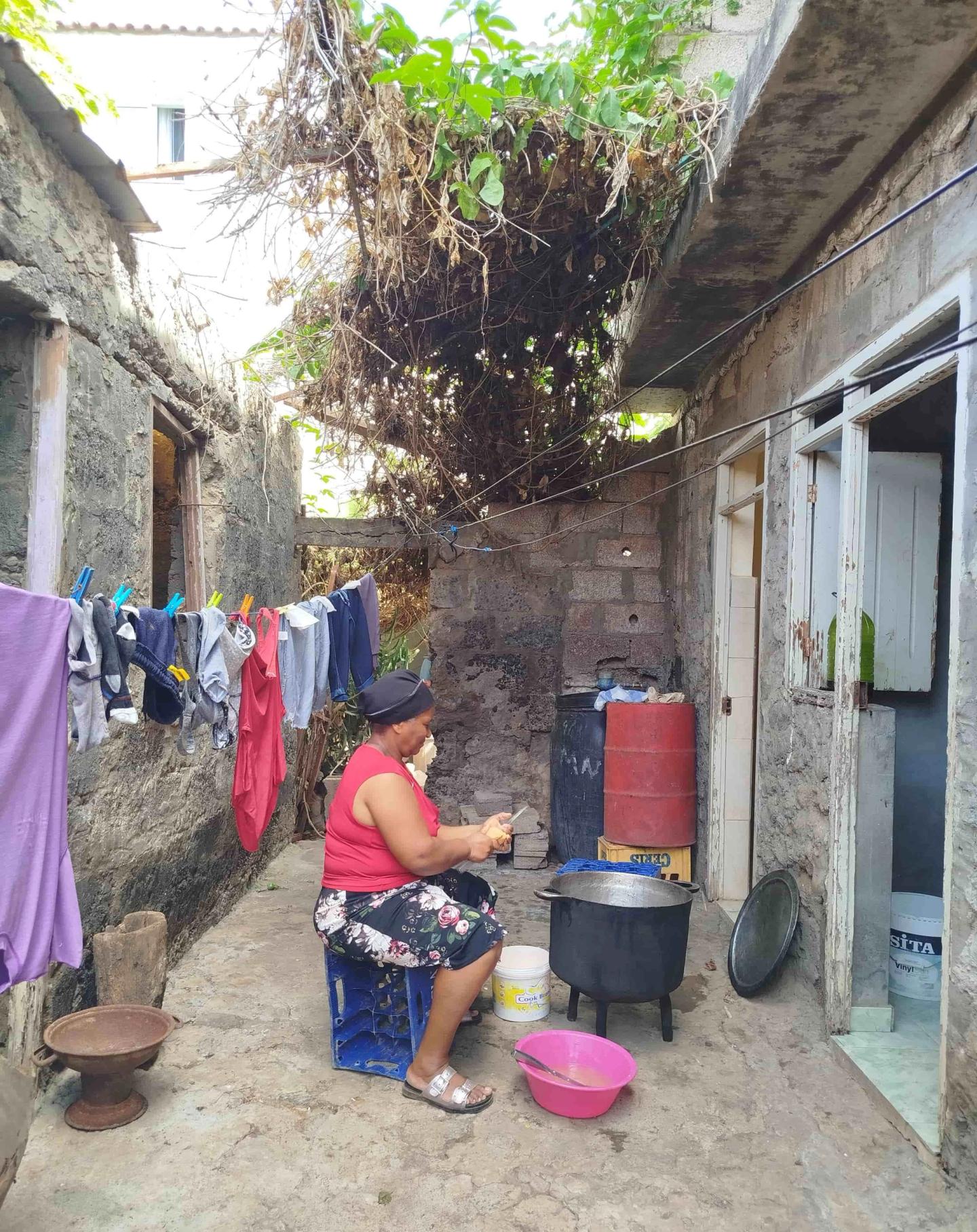

Recently, I spent a month on Santiago Island, Cape Verde. Shaped by intense heat and limited water resources, its landscape offers the opportunity to immerse oneself in a truly unique food culture. Although my primary focus was not food, eating was, of course, a daily necessity—and soon became a main focus.

Each meal offered me the chance to savour local specialities: crisp fish pastries made from corn flour, stuffed with spicy tuna and fried to golden perfection; sun-ripened, freshly picked papaya; and irresistibly sweet, homemade guava jam. Yet one dish stood out above all others. The iconic cachupa is a slow-cooked stew that is perhaps the crown jewel of Cape Verdean cuisine. And it was even more delicious than its reputation promised.
During my time there, I was privileged to witness the preparation of cachupa firsthand, thanks to a skilled local cook named Zinha, who generously allowed me to watch and document her process. She began her meticulous, labour-intensive preparation which spanned two hours, carefully peeling and slicing sweet potato, cassava, and yam; washing three varieties of beans to remove impurities; and soaking corn to soften it.

At the same time, Zinha prepared the fire, gathering sticks and aged wooden beams, and fashioning a rudimentary firelighter with the help of disposable plastic bags and matchsticks. Soon, the first flames flickered to life, glowing steadily as it grew. Once the fire was roaring, a massive pan was placed atop the embers to begin warming. Water was added, followed by the sliced vegetables, beans, and corn, which were layered carefully into the pan. A rich, homemade pork broth—cooked from bones, fat, and cartilage—was then poured in, infusing the dish with depth and flavor. As the first round of seasoning began, incredible aromas started to waft through the air.
While the stew simmered, additional ingredients were prepared. The pork was cleaned, trimmed, sliced, and seasoned, while slices of local chorizo were readied. The meats were added to the bubbling pot, seasonings adjusted, and the mixture left to slow-cook. This is traditionally several hours, but on this particular day we were in a hurry, so three had to suffice.
Even with a shortened cooking time, the cachupa emerged as a vibrant, flavorful testament to Cape Verdean culinary heritage—a dish that embodies patience, resourcefulness, and community. Its preparation reflects the island's slow pace of life, and cachupa is always cooked in large batches, as it is meant to be shared at family tables, festive gatherings, and communal celebrations. Like many emblematic cultural dishes, it serves as a vessel to foster connections among people through the simple yet profound act of eating together.
Finally, after a morning of hard labour, we found ourselves sitting at a table, savouring our culinary efforts. No one spoke—the cachupa left us speechless—while Zinha sat at the far corner with a cheeky smile.
___
This article is a contribution from one of the participants of The Gramounce Food & Art Alternative MA 2024-25. Their writing is inspired by one of our seminars, or responds to a similar field of interest within food & art.

João Pedro Soares is a filmmaker, writer, and researcher currently pursuing a PhD in artistic Studies at NOVA-FCSH in Lisbon. His doctoral research explores the intersection of ecology and contemporary Portuguese documentary cinema.
João is a participant of the 2024-2025 Food & Art Alternative MA (online), currently on a work-exchange with The Gramounce.
